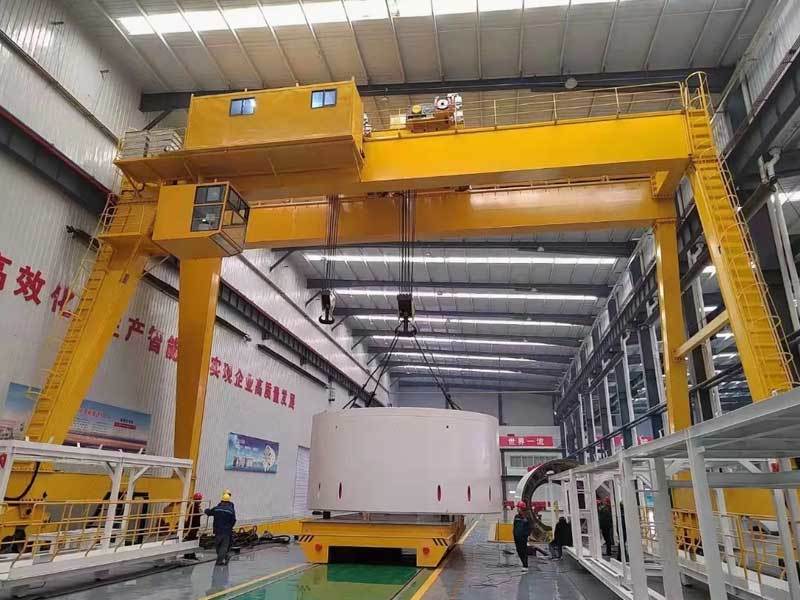Henan Aifite Intelligent Equipment Co., LTD.
The Future Development Trends of the Crane Industry
2025-05-13
**The Future Development Trends of the Crane Industry**
The crane industry has been a crucial part of the construction and logistics sectors for many years. As global infrastructure development accelerates, the demand for cranes continues to rise. However, this growth is accompanied by evolving technologies, changing regulations, and shifting market dynamics. This article explores the future development trends of the crane industry, highlighting technological advancements, sustainability, workforce challenges, and the impact of global economic changes.
One of the most significant trends shaping the crane industry is the integration of advanced technologies. The adoption of automation and digitalization is transforming how cranes are operated and maintained. Remote-controlled and autonomous cranes are becoming more common, allowing for safer and more efficient operations. For instance, drones are increasingly being used for site surveys and inspections, providing real-time data that can enhance decision-making. Furthermore, the Internet of Things (IoT) is enabling cranes to be equipped with sensors that monitor performance, detect faults, and predict maintenance needs. This shift towards smart cranes not only increases productivity but also reduces downtime and operational costs.

In addition to technological advancements, sustainability is becoming a key focus for the crane industry. As environmental concerns grow, companies are seeking ways to reduce their carbon footprint. This has led to the development of eco-friendly cranes that utilize alternative fuels, such as electricity and hydrogen, instead of traditional diesel engines. Moreover, manufacturers are designing cranes with lighter materials to improve fuel efficiency. The emphasis on sustainability is also influencing the lifecycle of cranes, with a growing trend towards modular designs that facilitate easy upgrades and recycling. By prioritizing sustainability, the crane industry can contribute to a greener future while also meeting regulatory requirements and market demands.
Another critical aspect of the future development of the crane industry is the workforce. As technology evolves, there is an increasing need for skilled workers who can operate advanced machinery and manage complex projects. However, the industry is currently facing a shortage of qualified personnel. To address this challenge, companies are investing in training programs and partnerships with educational institutions to develop a skilled workforce. Moreover, the incorporation of virtual reality (VR) and augmented reality (AR) in training can enhance the learning experience, allowing workers to gain hands-on experience in a safe environment. Attracting new talent, especially younger generations, will be vital for the industry’s continued growth and innovation.

The crane industry is also influenced by global economic trends and geopolitical factors. As countries invest in infrastructure development to stimulate economic growth, the demand for cranes is expected to rise. Emerging markets, particularly in Asia and Africa, are witnessing rapid urbanization and industrialization, driving the need for construction equipment. However, economic uncertainties, such as trade tensions and fluctuating commodity prices, can impact investment in infrastructure projects. Therefore, companies must remain agile and adaptable to navigate these challenges while seizing opportunities in new markets.

Moreover, the rise of e-commerce is reshaping logistics and supply chain management, leading to increased demand for cranes in warehousing and distribution centers. Automated storage and retrieval systems are becoming more prevalent, requiring cranes to operate efficiently within these environments. As the logistics sector continues to evolve, the crane industry must adapt to meet the changing needs of customers, ensuring that equipment is versatile and capable of handling various tasks.
In conclusion, the future development trends of the crane industry are being shaped by technological advancements, sustainability initiatives, workforce challenges, and global economic changes. As the industry embraces automation and digitalization, it will enhance productivity and safety while reducing environmental impact. Additionally, addressing workforce shortages through training and education will be crucial for sustaining growth. Finally, companies must remain vigilant to global economic trends, adapting their strategies to capitalize on emerging opportunities. By embracing these trends, the crane industry can position itself for a successful and sustainable future.
Next page:
Real-time information
Core Development Trend of Electric Flat Car
2025-07-24
2025-06-20


